Departing from the city that statistically handled COVID-19 the worst in the entire world, Lewis decided that we should fly from New York to Finland: the country that remained the Happiest Country in the World (despite the pandemic). The Republic of Finland won first place in the United Nations' World Happiness Index for the fourth consecutive year!
Visiting that northeast European nation is late autumn is splendid. Despite its northerly latitude, the temperature was comfy: not too cold, never a gust of wind, and cloudy-but-bright skies. We travelled aboard FinnAir.
It employs some of the smiliest staff we ever saw: real smiles that were genuinely pleased to welcome us. In fact, 99% of the people we encountered in Finland were like that. It was wonderfully surreal. If you want to be immersed in happy hospitality, we recommend visiting Finland.
This is the national coat of arms.
A week before our flight, it was a good omen when Lewis helped a client at his boutique who was a FinnAir flight attendant. Her name was Nina, and she was jubilant that he was going to visit her homeland. Lewis told her that our visit was centered in the capital: Helsinki. She gave some pointers about highlights to see, which we did with gratitude. Alas, we did not encounter her on our flights. But it was a foretaste of Finnish hospitality. Finns are not pretentious, and everyone's input is welcome. When they open their mouths to speak, you will often hear something meaningful.
Before departure, Lewis and I were required to complete an online health survey to show the Finnish authorities.
Unnecessarily, the FinnAir representative in New York (who seemed like an uncaring New Yorker--and not a Finnish citizen) made us register and complete another online profile. It took us 45 minutes to do, and it was never used.
Our 7.5-hour transatlantic flight was enjoyable. The plane was partially filled, and the crew ensured that passengers were spaced apart for social distancing purposes. Yet, Lewis and I figured that they could've spread the passengers further apart, so that nobody was directly in front of us, behind us, or in the section beside us. Other passengers voiced the same notion.
The flight attendants were attentive and personable. The food and wine were good. I liked the legroom. The flight was smooth. We landed on the Fennoscandia Peninsula at Helsinki-Vantaa International Airport.
With a rooftop solar power plant, LED lighting, shuttle buses that operate on renewable waste-based fuel, and electricity purchased from wind turbine farms, the airport is carbon-neutral! (Helsinki has one of the highest standards of living in the world, and its airport demonstrates that).
My T-mobile plan immediately provided good service.
Helsinki's airport does not have a tramway to carry its passengers from one end of the airport to the other. That was the only inconvenience. Otherwise, the airport was delightfully full of Nordic sleekness! Our footsteps occurred on wood parquetry flooring--which was handsome.
At each arrival/departure gate, the furniture had the "clean lines" that are found in Asian and Nordic countries.
Seen below, public seating resembled mountain ranges. Sensibly, they are equipped with electric outlets.
Overhead lighting and space-dividers were made of blonde wood in geometrical shapes.
Lavatories were fashioned with wooden doors, which resembled a wellness sauna. Motion-activated lights were accompanied by a refreshing soundtrack of chirping birds... as if we were in a woodland sanctuary.
Overall, it was as soothing as a Scandinavian spa!
Technically, Finland is not a Scandinavian country (those are the kingdoms of Norway, Denmark, and Sweden). While the currencies of those kingdoms remain as Crowns, Finland uses the Euro.
It is a Nordic nation. Nordic nations include the three aforementioned kingdoms, Finland, Greenland, the Faroe Island, the autonomous region of Aaland, and the island-nation of Iceland. Finland's flag shares a similar "Nordic cross" design with theirs.
With one-third of its border touching the sea, Finland abuts Norway, Sweden, and Russia. Looking across the Baltic Sea, it faces the Baltic nations of Estonia and Latvia. Combining Nordic, Scandinavian, and Baltic vibes, Finland is an amazing place! Being a pair of adventurers, we were eager to explore its capital.
Brainwashed from their "car culture", Americans may want to drive themselves everywhere... but cars are not needed. It is better to use the marvelous public transit and your own two feet.
The most efficient and economical way to arrive in the City Center is by rail. Finland's railways are state-owned, and a segment of the railroad is operated by the Helsinki Regional Transport Authority (which also manages the city's public transit and bike-share program). We used one of the Commuter (Airport) Trains, which are identifiable by their purple/white color-schemes. On transit maps, their icons are colored as such.
They depart every 15 minutes, which is helpful. You can purchase a €2.80 One-Way Ticket or an All-Day ticket, which is more economical for multiple rides. Ticket fares are based on which zones you travel through. There are four zones.
All travel within the Greater Helsinki Area stays within Zones 1 and 2, but the airport is in Zone 3. Since our first day in Helsinki involved multiple uses of public transportation, we purchased All-Day Tickets, but it had to be for Zones 1-3 due to the airport. That cost €11.00 (otherwise, an All-Day Ticket for Zone 1-2 is €8.00). Finland functions with many automated, cashless, contactless systems. In lieu of a ticket booth, a machine dispensed our tickets. Just like most websites in Finland, every type of machine that we used during our trip had an option for the English language.
As the capital city and largest seaport, Helsinki is a multi-language locality. Finns are bi-lingual--and many speak multiple languages. In addition to Finnish, citizens know Swedish and Russian (due to their interlocking histories), and they learn English as a lingua franca to communicate with everyone.
Respectfully, Lewis and I learn the basic greetings and sayings in the native languages of wherever we go. Saying "Hello" in Finnish is Hei (it sounds like "Hey"). Another version is Moi (it sounds like "Moy"). Saying "Goodbye" is either Hei Hei or Moi Moi. As in China, there is no word for "Please"; people merely ask for things nicely, and others do their best to accommodate the request as nicely as they can. Saying "Thank you" is Kiitos (it sounds like "Key-toes").
When getting aboard Finnish trains, trams, and buses, riders utilize a seamless Tap-and-Go system (which NYC still refuses to invest in). Indicative of a clean society, trash receptacles are conveniently located by those kiosks...
...and covered trash bins are next to most seats.
For the comfort of their passengers, trains are sensibly equipped with electric sockets and small tables under the windows. NYC and Long Island commuter trains--which cost much more--still lack such features.
*To see what overpaying passengers endure when using commuter trains in New York, please use this link:
Punctually, the bicycle-friendly train glided noiselessly out of the underground station.
During our ride, transit police boarded the train and courteously checked every passenger for a valid ticket. (That occurred on our return trip to the airport, too).
We passed scenic landscapes, and we admired the tidy towns that the train paused at. We also saw double-decker trains.
Trains and train stations are bicycle-friendly... and they are clean.
During our visit, Helsinki underwent construction and renovation, but it remained well-organized and tidy. Unlike in NYC, there were few road closures as a result of construction. The public transportation was never rerouted or "out of order". Everything operated like clockwork. That made us happy! :-)
The capital is within the Uusimaa Region. This is its coat of arms.
During the Iron Age, it was first settled by pagan Finns and Estonians, then colonized by Swedes in 1150 (who converted them to Christianity with a bribe of four years of tax-free status). The Kingdom of Sweden controlled it for 700 years. In 1809, Sweden lost Finland to the Russian Empire. After Russia's civil (Bolshevik) war of 1917, Finland asserted its independence and established its own monarchy. (Such a venture was previously attempted in 1742). Due to its rapport with the German Empire, it crowned the emperor (kaiser)'s brother-in-law, Prince Frederick of Hesse, as its king. However, World War One concluded in 1918, and the kaiser abdicated the throne, which turned Germany into a republic. Western powers pressured Finland to revoke its crown from the German prince, and Finland became a republic. During 1939, WWII began, and it became embroiled with Soviet-controlled Russia--losing 10% of its land. However, it repelled Soviet control during the Cold War, and its neutrality and independence propelled urbanization.
*To see our adventure in Germany, where we drank wine made by the current Prince of Hesse, please use this link:
https://halfwindsorfullthrottle.blogspot.com/2022/11/our-trip-to-berlin-germany-part-1-of-6.html
Exactly 30 minutes later, our train quietly arrived in the capital, which has a population of 631,695. Its coat of arms was designed in 1599 by Johannes Bureus, a Swedish mystic.
Our train swiftly arrived at the Central Station, which faces south to the Gulf of Finland. It is in the Vironniemi (Cape of Estonia) District.
Designed in 1916 with Art Nouveau style, it has sunlit platforms, a spacious ticketing hall, restaurants, farmer's market stalls, and a clocktower. Its statues wore masks to indicate COVID precautions. That was clever. Unlike NYC or Boston, there were no homeless people huddled in the station, nor were there any beggars in the halls. It was a peaceful experience to move with the flow of people--no pushiness or rudeness--and maneuver ourselves to the exit. That's how travel should be.
*You can purchase tram tickets at the Central Station or from Parking Meter machines on any street. They have the option to function in English.
Before our arrival, Lewis selected our hotel via Booking.com (a wonderful Dutch company) and made online reservations at the Radisson Blu Aleksanteri Hotel. Located in the main Kampinmalmi District, it is perfectly situated in the "heart of the city". It is a 15-minute walk from the station. The #6 trams have a stop on the corner, one block from it. So, we rode on the #6 tram (dark green on the map).
Manufactured in Finland, there are 122 trams. Here is a short video of some.
Most are new. They are all clean. They are equipped with flat-screen televisions, digital monitors to display upcoming stops, and handicap accessibility. Sensibly, some seats have tables. The upholstery features a whimsical transit map.
Every queen-size bed comes with four pillows: two soft ones and two firm ones. (We prefer firmness). But we had three soft pillows. (They were made in Finland and stuffed with 60% "down"--which is the light/fluffy fibers underneath duck/goose feathers--and 40% feathers).
Remembering that I saw a housekeeping trolley in the hall, we located the housekeeper. It was the first time we ever saw a male housekeeper at a hotel. The muscular, dark-skinned fellow stopped what he was doing to help me. He escorted me to the pantry on that level, and invited me to feel the pillows. When was the last time a muscled man invited you into a closet to feel "firmness"? Ha ha! He was from Africa, and he mentioned his intention to visit Manhattan. I felt like warning him to save his money and visit a place with better value. Instead, I thanked him for the firm pillow--in a crisp pillowcase--and returned to my room. Finland is a non-tipping culture, so people do their jobs well because it is the right thing to do. They do not seek gratuities.
Lewis also bought tickets to a symphony concert, that night. Therefore, our first objective was to find a place to dine. On the next street was Grön, which earned a Michelin star! (The name means "Green", which indicates its eco-friendliness). It was our first choice, but technical glitches did not let us make online reservations before our arrival. So, we hurried to their front door and inquired if any tables were available?
To our dismay, we were told that the 24-seat ravintola (restaurant) was fully-booked... for the entire month! However, the waiter saw the sincere eagerness in our eyes, and he volunteered to put us on the "Wait List", in case any cancellations occurred. Politely, he forewarned us that customers rarely cancel. We understood and were still grateful for a chance. The Finnish deities of abundance must've blessed us, because as we walked back to the hotel, the restaurant telephoned me to say that a cancellation just occurred, which allowed us to dine at 9pm. Such great luck! It meant that we had to leave the concert prematurely, but we accepted!
However, our stomachs demanded nourishment before the concert, so we looked online for options. Helsinki is similar in size to Boston--and both are peninsulas--but it has more types of cuisine than Boston. Much more.
*To read about our trip to Boston, please click this link:
https://halfwindsorfullthrottle.blogspot.com/2018/04/our-trip-to-boston-part-1-of-3-walking.html
From earlier online searches, we knew that a Food Hall existed one block south of our hotel, and it contained several restaurants. By then, the weather turned into a drizzle (it was the only rain that we experienced during our five days). Thankfully, the hotel offered complimentary umbrellas to its guests: long, sturdy ones with hooked handles. We each used one, as we walked to Hietalahden Kauppahalli (Hietalahti Market Hall).
Representative of Helsinki's cultural diversity, the hall features authentically-made Japanese, Filipino, Italian, French, Portuguese, Finnish, Vietnamese, and Middle Eastern foods. Each one has a designated seating area near its kitchen. Built in 1903, the original wood ceiling and decorative stalls add charm to the space.
Lewis chose an eatery named Mama's Phở, and an "auntie" (presumably the proprietress) served us hearty bowls of pho with freshly-pulled noodles, and the crispiest spring rolls. The total was €27.00.
Below was the view from my seat...
We noticed how customers purchased food from one stall, wine or beer from another, and snacks from others. None of the owners insisted that customers stay in their own seating areas. Such casualness reminded us of dining in Barcelona. Our portions were larger than expected--which was a blessing of abundance--so we took leftovers to the refrigerator in our hotel room. But before we did, we popped into Robert's Coffee; it was due to close in 30 minutes. In my opinion, they brew the best coffee in the capital. Their sweets are a treat, too.
A Finnish coffee aficionado named Robert Paulig founded the company in 1987. It began as a roastery in Helsinki, and he applied six generations of his family's experience in the coffee industry to make it flourish. The first coffeehouse opened in 1992 in the city. Now, 300+ shops exist across the Nordic nations and in Japan (we know that they love good coffee). We ordered lattes and punssirulla: green marzipan logs filled with crushed biscuits/butter/cocoa...
...that are flavored with punsch liqueur (brought from Java in 1733 and made with brandy, arrack, and lemon)...
...and dipped in chocolate. All of their food is freshly handmade. Organic espresso beans from Colombia were freshly-ground to make our lattes. Whereas the industrialized milk of the USA causes our stomaches to gurgle uncomfortably, Finland's non-GMO milk was creamy and perfectly delicious! The barista's feather-shaped "foam art" was picturesque.
Unlike American baristas who expect you to wait within earshot to retrieve your (costlier) drinks from them, Finland's baristas bring your (affordable) beverages to you. Unlike American baristas who expect you to clear/return your dirty dishes, Finnish baristas expect you to leave them on your table; you are the guest, and they will clear them after you leave. American baristas still expect gratuities; Finns live in a non-tipping culture. That is a wonderful value. Each sizable latte cost €2.90, which equals $3.30. In NY, a latte costs $4.50, plus $1.00 for oat milk, plus $1.00 gratuity. Twice the price and not so wonderful.
From our hotel, we walked through the raindrops--like cheery Helsinkians--and approached the northbound tram stop. The wet cobblestone streets glinted in the lamplight, and sparkly-wet trams curved around buildings. It was charming.
Tram stops are all equipped with video displays that accurately predict when the next tram will arrive. Seen below, the #6 (going to the neighborhood of Arabia) was due within three minutes.
Most tram timetables are more modern and sophisticated.
Gloriously, the trams arrive within several minutes... regardless of day or night or weekday or weekend. Coming from a depilated place like New York City, it was wonderful to experience such dependable service. Our trip required a transfer from the #6 to the #10 tram, which was easy.
We observed that most taxicabs are Mercedes, just as we noticed in Copenhagen. A superb ride is given at no extra cost, whereas NYC greedily adds a "luxury surcharge" for such a sedan. Another reason to be happy in Helsinki.
We disembarked at Helsingin Musiikkitalo (Helsinki Music Center). The concert hall was constructed from 2008-2011, and most of it is underground. It is a breathtakingly sleek space, with impressive lighting, architectural elements, and height.
Befitting an excellent society, the space features a souvenir shop on the balcony above the lobby, two cafe/bar counters made out of inside-illuminated marble, and two levels of restaurants where theatergoers can pre-order their food. The Coat Check costs €2 per person, so we bypassed it. After we got upstairs to enter the seating area, an usher informed us that using the Coat Check was mandatory for the "balcony seats" that we had. Perhaps, they don't want the clutter of coats/umbrellas in the balconies. There was no indication of that on our tickets, nor was there any signage in English by the Coat Check. So, we went downstairs again, deposited our things, and climbed the stairs once more. A young usher was very helpful, and we noticed his well-trimmed black nail polish (maybe for Halloween). He escorted us to our row that overlooked the stage.
When Lewis purchased our tickets online, he selected a tier above/behind the orchestra. The 1,704-person hall is one of the cleverest we know of. Seats surround the stage in a "vineyard style", and the aisles have zigzag patterns to avoid conformity and provide new perspectives. Any seat is a good seat. To our delight, the tickets were affordable: the total of both was €27.89! Growing up in New York, we are sadly accustomed to overpriced theatre tickets in shabby (yet money-guzzling) theatres. Ergo, this performance was a joy!
We had a great view of the pianist, as she enthusiastically hopped up from her bench during frenzied moments.
With a half-hour to spare, we quietly tiptoed out of the hall, and we rode the trams back to Aleksanteri for our dinner reservations.
The same waiter recognized us and sat us near the window. His smile beamed because he was able to accommodate us. Two of his colleagues made a point of letting us know how fortunate it was that we arrived at the exact time to be added to the Wait List because we inherited someone's cancelled reservation before two more people on the Wait List. Lewis and I agreed that it was meant to be! All around us, every candlelit table was full of jolly diners munching on perfectly-plated masterpieces.
Grön defended its Michelin Star since 2018. This year, it achieved a Green Michelin Star! This year, the revered Michelin Guide began recognition for "sustainable practices": working with sustainable producers and suppliers, canceling food waste, reducing plastic and non-recyclable usage, and ethical morals.
Another allocade was given to Grön when the Finnish Gastronomic Society named it the best restaurant. Grön focuses on sustainably-harvested, organic ingredients from across Finland, and its chefs personally know all of their suppliers and visit each farm and production facility.
They offer a vegan menu, but we chose the classic 6-course Chef's Tasting Menu: €92.00 each. Menus are seasonal. The milieu was so good that we selected both extra courses! We knew that they would be scrumptious... and they were.
Our waiter served us white wine as an aperitif. Saying "Cheers" in Finnish is "Kippis"! We chatted with him, and he instantly liked our affable American charm. From the wine list, Lewis chose a Reisling Kabinett produced by the Ratzenberger winery in Germany.
As the wine tingled our palate, we admired our surroundings. Dangling overhead, dried herbs and flowers come from Toni's mother, to be used in his recipes. The restaurant cultivates its own garden for year-round herbs, vegetables, and fruits. The chefs preserve or ferment some of them in jars on the wall, for future use. Such thoughtful efforts to constantly use fresh ingredients were impressive.
Without further ado, our meal commenced. The way that each course was presented by different members of the kitchen staff reminded us of our Chef's Tasting dinner at Matthew Orlando's restaurant, Amass, in Copenhagen. To read about that, please click this link:
https://halfwindsorfullthrottle.blogspot.com/2019/04/our-trip-to-copenhagen-part-7.html
Grön operates its own bakery that produces daily loaves of sourdough bread...
...which is served alongside freshly-churned butter from a local creamery. We love creamy butter--probably as much as Julia Child did. Ha ha. The bread's crust was perfectly firm, while the inside was delectably chewy. It was presented with additional spreads: skinned tomatoes and grilled sweet peppers, roasted pumpkin paste, and marigold vinegar with cumin and ramson salt. We broke off slices of bread to try with each appetizing morsel. Each mouthful was heavenly. Our waiter astutely supplied us with more bread!
Before the rest of the food arrived, our waiter cutely implied that if we examined the right-sides of the table where we sat, we would discover our silverware. It was a pleasant surprise to realize that a hidden drawer held our cutlery! Working from left to right, it was laid to correspond to our courses. So clever.
The tables--and their secret compartments--were custom-made and hand-hewn for the restaurant. Such things keep the craft of carpentry alive.
During our meal, Lewis had a fine view of the bustling kitchen prep area; the ovens and stoves were out of view.
Our second course was Jerusalem artichoke over a bowl of barley koji porridge and persevered gooseberries.
Next, we were presented with wild mushrooms, foraged from local forests.
They were made into a ragout and placed atop grilled potato tortillas (a wonderful unleavened bread invented in Mexico). They were flavored with smoked deer fat, butter-fried mushrooms, and lingon berries. Their woodsy essence was astoundingly flavorful!
Served in a small earthenware cup, we sipped herb-infused Blue Mussel broth with a smidgen of dill oil. Then, we ate grilled Blue Mussels (from the city's outer archipelago in the Gulf of Finland) that were rolled in pea miso paste.
It was the first time that we ate Pike, which was lovely. The fish was roasted with leeks and drizzled with a sauce of grilled butter, reduced pike broth, and parsley oil. All of the fish are sustainably line-caught (not with nets) in the Baltic Sea, in accordance with regulations from the Marine Stewardship Council.
That species of fish is snagged with fishing poles in winter, too.
However, the chef is furtive for eco-friendly freshness. He rejects fishmongers who are not fully aware of their fishermen's methods. The fish was plated beautifully.
After that, we opted for the €16 Extra Course of Wild Duck. It recently became Hunting Season in Finland. The cook who prepared it for us explained that hunters stalked and shot the ducks a couple of days before we ate them. That is fresh food!
Plucked feathers adorned the bowl, to showcase the meat's freshness. It was encased in croissant pastry (a challenge for any baker) and brushed with duck demi-glace. We adored every bite.
Our dessert included four delicacies from the pastry chef. The first was a trio of thinly sliced Green Apple, Gala Apple, and Winter Pear--all served on a bed of chopped ice, alongside the freshest sprigs of lemon thyme and maple flowers (which had a punch of sweetness). They were wonderful.
It also came with colorful bunches of edible lichen.
The waiter who presented it explained that deer often eat it, too. It has a mild sweetness and melts in your mouth like cotton-candy. Interestingly, we noticed that many Helsinkians use it to adorn their flowerpots!
The second delicacy was a €20 Extra Course. Black truffles were recently harvested from a purveyor who began their making in 2016. Burgundy-flavored oak was obtained from a winemaker and buried in specific soil. That permitted the elusive truffles to grow on it underground. Six years after starting the project, the truffles were ready to be detected and eaten.
The shaved truffles provided a generous dusting on vanilla ice cream with berry compote.
Our favorite dessert was a tower of fermented-rhubarb pancakes, coated with green pine cone caramel, autumn apple jam, lemongrass, and pine sorbet! It was utterly amazing. According to one of the cooks (a kind-hearted blonde man with multiple earrings), it is the favorite of most clients.
Lastly, we were served a star-shaped Chocolate wafer: each segment was covered with herbs from the summer harvest.
Add to that excellence the fact that the restaurant strives to constantly reduce electrical consumption for its machinery. It upgrades its ovens and freezers. It buys its power from bio-energy and wind turbines. The staff only works 4 days per week, which is an effort to have a Life/Work balance in the hospitality industry. The chef encourages his cooks to experience 2-4 weeks abroad for cross-cultural training, and he pays them a half-salary during that time. The restaurant also eliminated food waste during its preparations! Congrats for all of that!
*To read about our next surprising meal at a Michelin-starred restaurant, please click this link:
https://halfwindsorfullthrottle.blogspot.com/2022/03/our-trip-to-italy-part-7-of-7-italian.html
We cherished the convenience of exiting the restaurant (waving to each server as they hollered "Goodnight") and merely crossing the street to return to our hotel.
We sat by the flameless fireplace, and I perused the bookcases. I saw some of my favorite authors. Alas, the books were all printed in Finnish. (A section for different languages would be nice).
The hotel has the fastest elevators that we ever used. Our wine consumption put us in the perfect mood for bedtime... if you know what I mean.
It was certainly a spectacular arrival in Finland. Join us in the next part for our first full day of exploration.



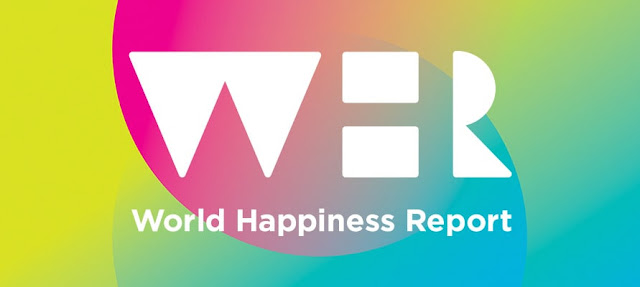





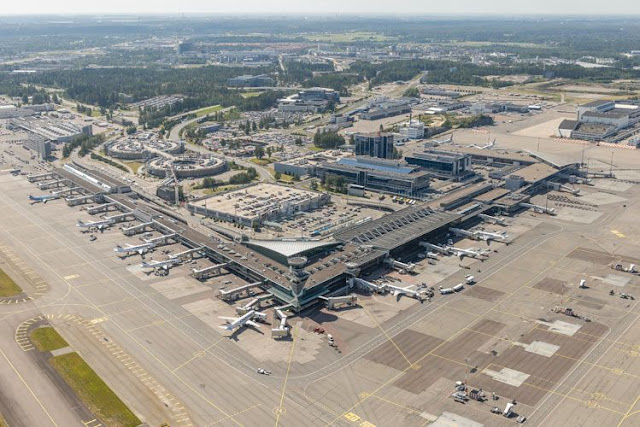



































































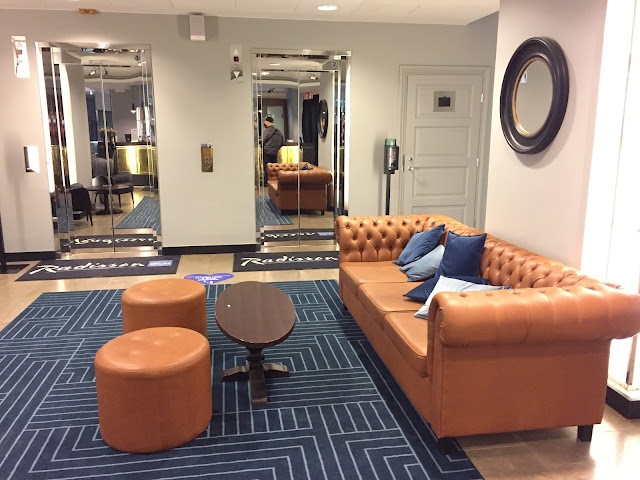






































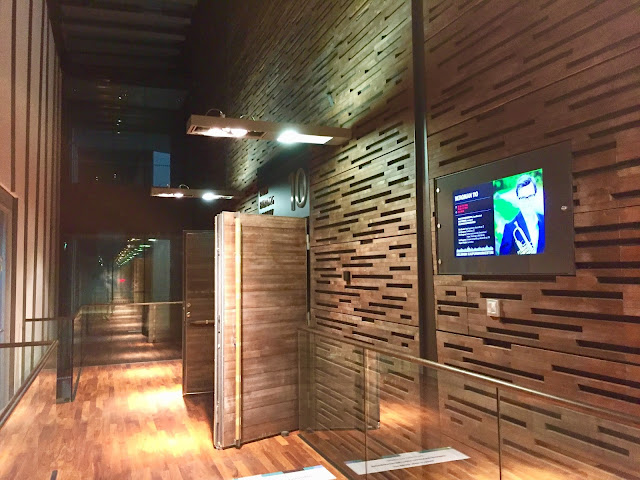


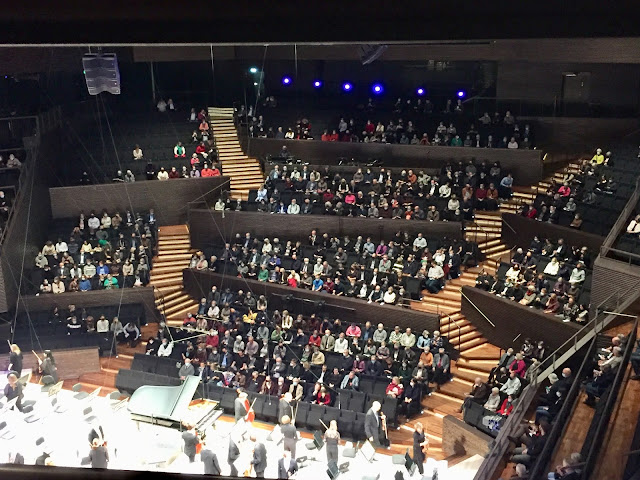












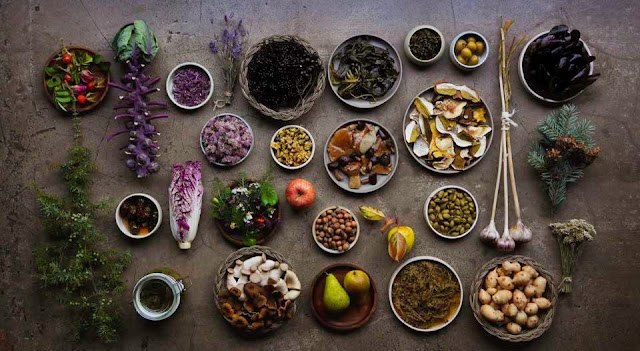




























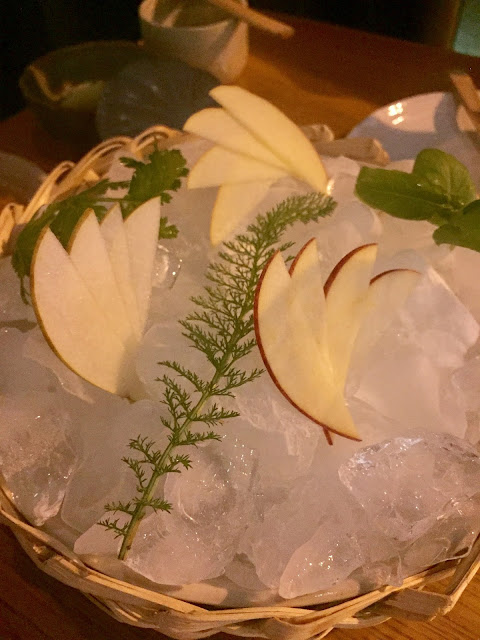












No comments:
Post a Comment
Don't be shy: leave your comments :)